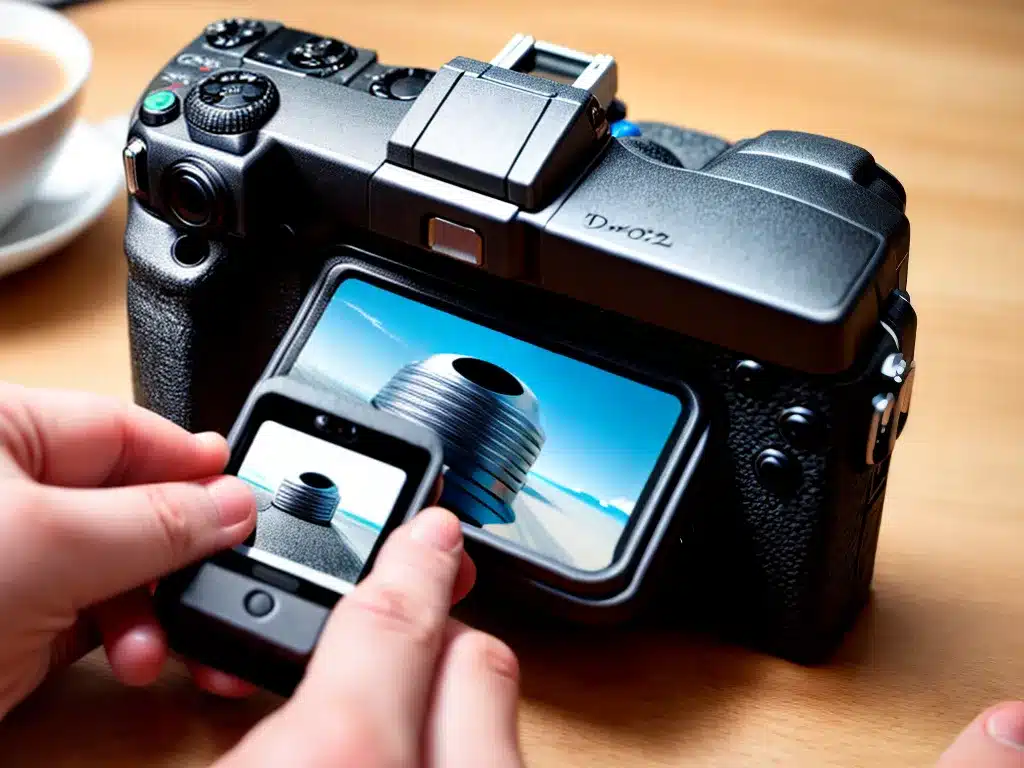
Introduction
Losing photos from your digital camera can be devastating. Those precious memories of family vacations, your child’s first steps, or that once-in-a-lifetime shot may seem gone forever when you accidentally delete them from your camera. But don’t panic! With the right tools and techniques, recovering deleted photos from a digital camera in 2024 is possible.
I will walk you through everything you need to know to get your photos back, from preventing photo loss in the first place to using data recovery software to retrieve deleted files. Follow these tips, and you can rescue your images.
Back Up Photos Regularly
The best way to avoid losing your photos forever is to back them up regularly. As soon as you import new pictures from your digital camera to your computer, be sure to:
- Save a copy to an external hard drive or cloud storage. This gives you a second version to fall back on if your originals are deleted.
- Enable auto-save features. Many photo editing and organizer programs can automatically save copies of your work as you go.
- Turn on cloud syncing. Services like Apple iCloud, Google Photos and Amazon Photos will securely store your images online as you take them.
Regular backups prevent deletion from being permanent. Even if you lose your originals, you can restore them from a backup. Get in the habit now to avoid heartache later.
Avoid Taking More Photos
When you realize photos have been deleted from your digital camera, the natural response is to keep shooting to try to recover the lost images. But taking more pictures is the worst thing you can do!
Here’s why:
-
Your deleted photos may still be recoverable. Every new shot you take could potentially overwrite the deleted data and make it unrecoverable!
-
It uses up space. The less remaining space on your memory card, the lower your chances of retrieving deleted files.
Instead, immediately stop shooting and prepare to recover the photos before taking more. Every action you take affects your chances.
Recover from Your Camera
Before turning to data recovery software, see if your camera itself can retrieve deleted photos:
-
Check the trash folder. Most digital cameras have a trash or recycle bin for deleted files. Your photos may still be there!
-
Look for a “Recover” option. Some cameras have built-in recovery tools that rescue recently deleted images. Check your settings menu.
-
Restore default settings. If you recently adjusted settings like image quality or format, reverting them may bring back deleted photos.
-
Remove and reinsert the memory card. This simple trick has helped some camera owners recover deleted files.
If you’re lucky, your camera may have stored the files so they can be undeleted on the spot. Give it a try!
Use Data Recovery Software
If your camera’s built-in options don’t work, your best bet lies with data recovery software. These specialized tools scan storage media and aim to restore deleted data. Look for one that:
-
Works for cameras and memory cards. Make sure it supports your specific camera make and model.
-
Recovers different file types. A broad range like JPG, RAW, PNG, etc. increases your chances.
-
Has a high recovery rate. Check reviews and look for a high success rate with retrieving photos.
Top programs include:
- Stellar Photo Recovery (97% recovery rate)
- EaseUS Data Recovery Wizard (95% recovery rate)
- Disk Drill (92% recovery rate)
Follow the step-by-step process in your software to scan your memory card and restore deleted photos.
Leave the Recovered Files Intact
When your deleted photos reappear thanks to data recovery software, you may be tempted to immediately delete them again to free up space. Don’t do it yet!
Recovered files can be fragile. Deleting them again increases the risk of corruption and permanent data loss. Instead:
-
Copy the restored files to another device like an external hard drive or cloud storage.
-
Only delete the recovered files after backing them up. This keeps your rescued images safe!
-
Run the recovery software again. It may find even more deleted files the second time around.
Let the restored photos be for now. Focus on securely backing them up before doing anything else.
Learn From the Experience
Going through the photo recovery process once is enough for most people. Use the experience to implement habits that will prevent deletions and data loss moving forward:
-
Back up your photos routinely. Don’t let this happen again!
-
Note the recovery software that worked. Keep it on hand in case you need it again.
-
Be more cautious when deleting. Double check what you are erasing to avoid mistakes.
-
Store your photos more safely. Use cloud storage, external drives, RAID arrays, or other redundant storage.
Recovering deleted photos can be a hassle. But letting the experience change your habits means you can avoid repeat incidents down the road.
Conclusion
Accidentally deleting irreplaceable photos is one of the most common digital disasters. But by following the right photo recovery steps, rescuing your images is possible even in 2024 and beyond.
Back up routinely, avoid taking more pictures, try built-in camera recovery tools, and turn to data recovery software if needed. With some strategic effort, your photos don’t have to be gone forever.
Use these tips to successfully recover deleted photo files. Then make the changes needed to keep your images safer going forward. With the right tools and techniques, digital photo loss can be reversed.












